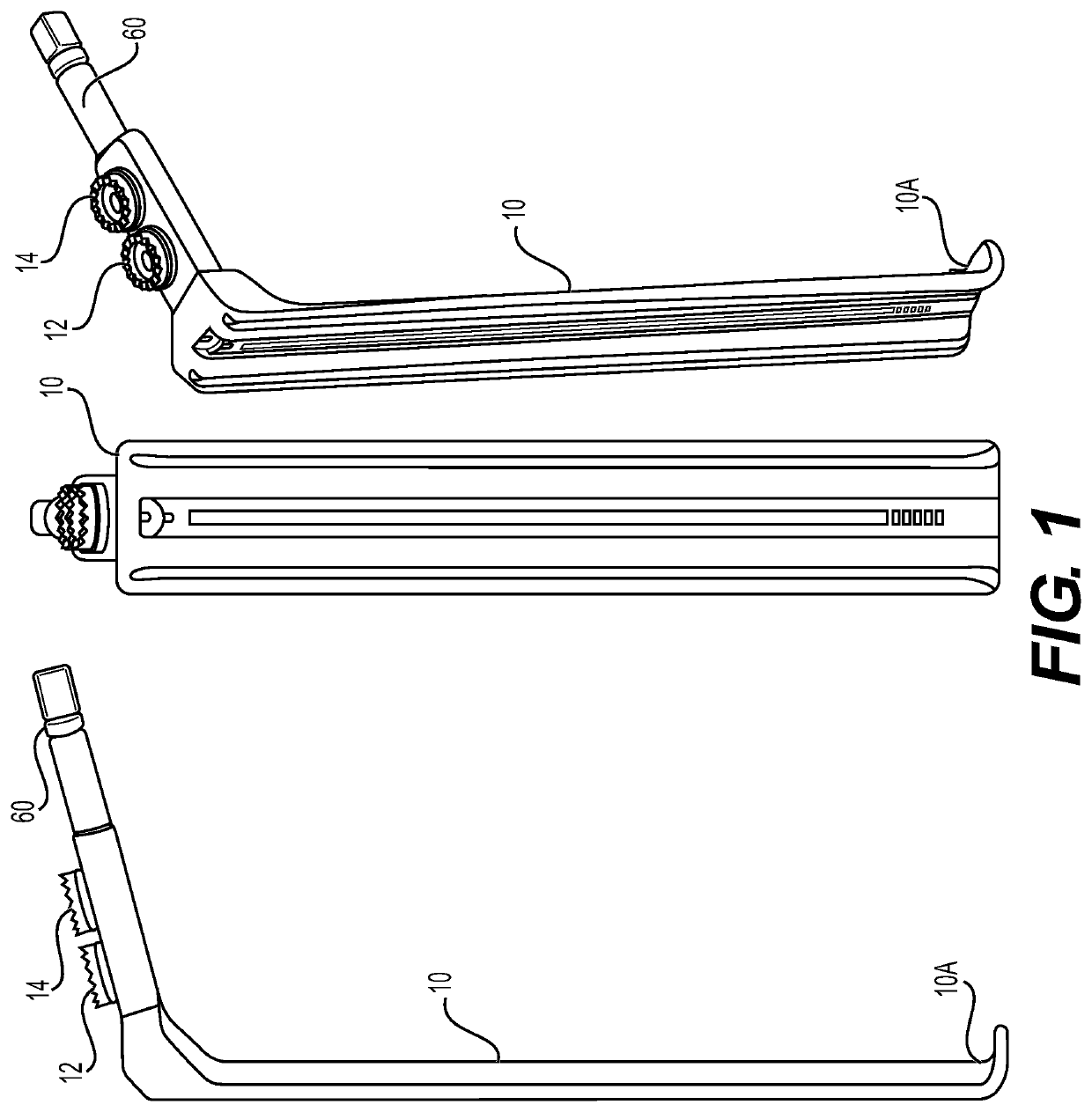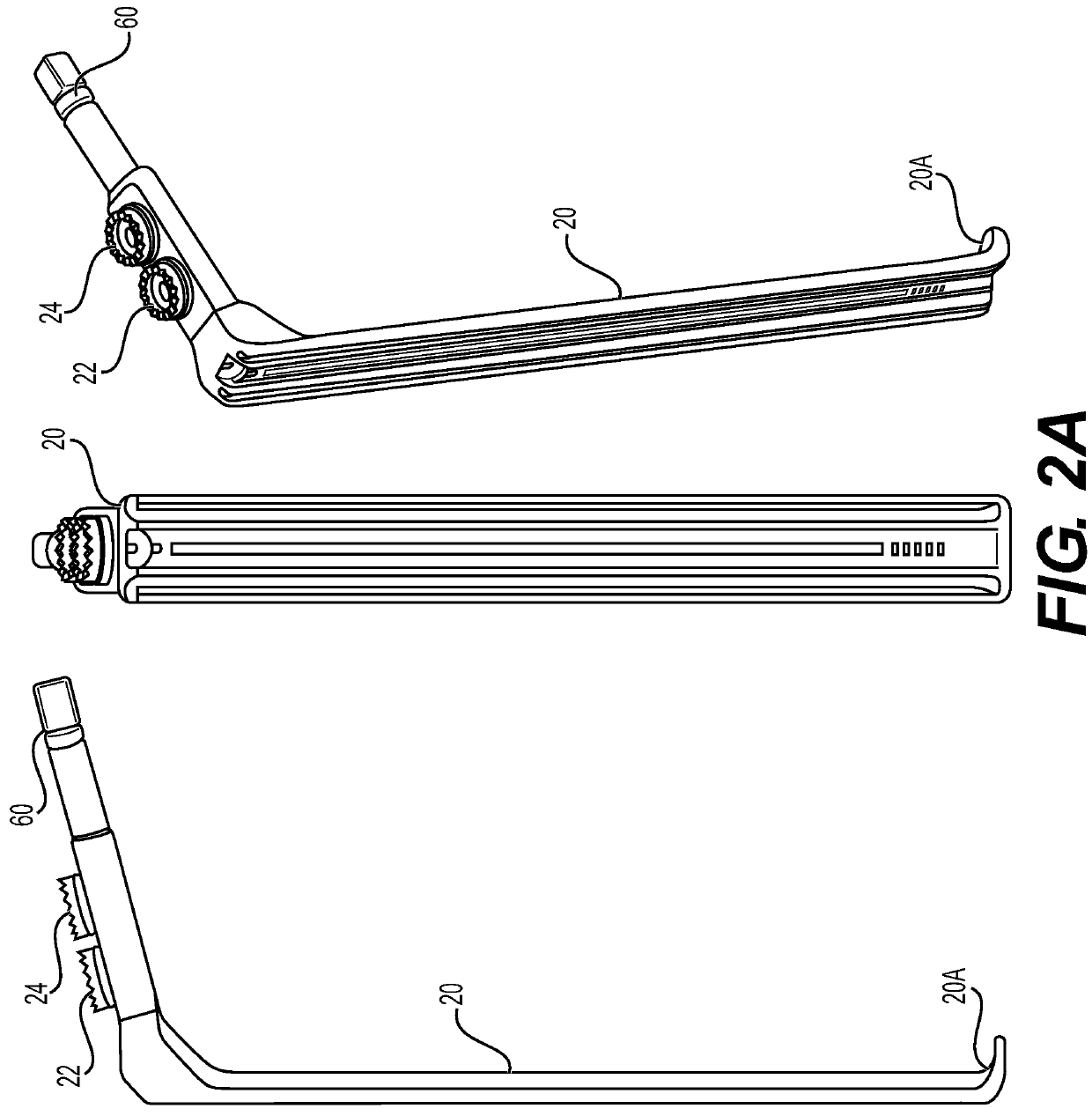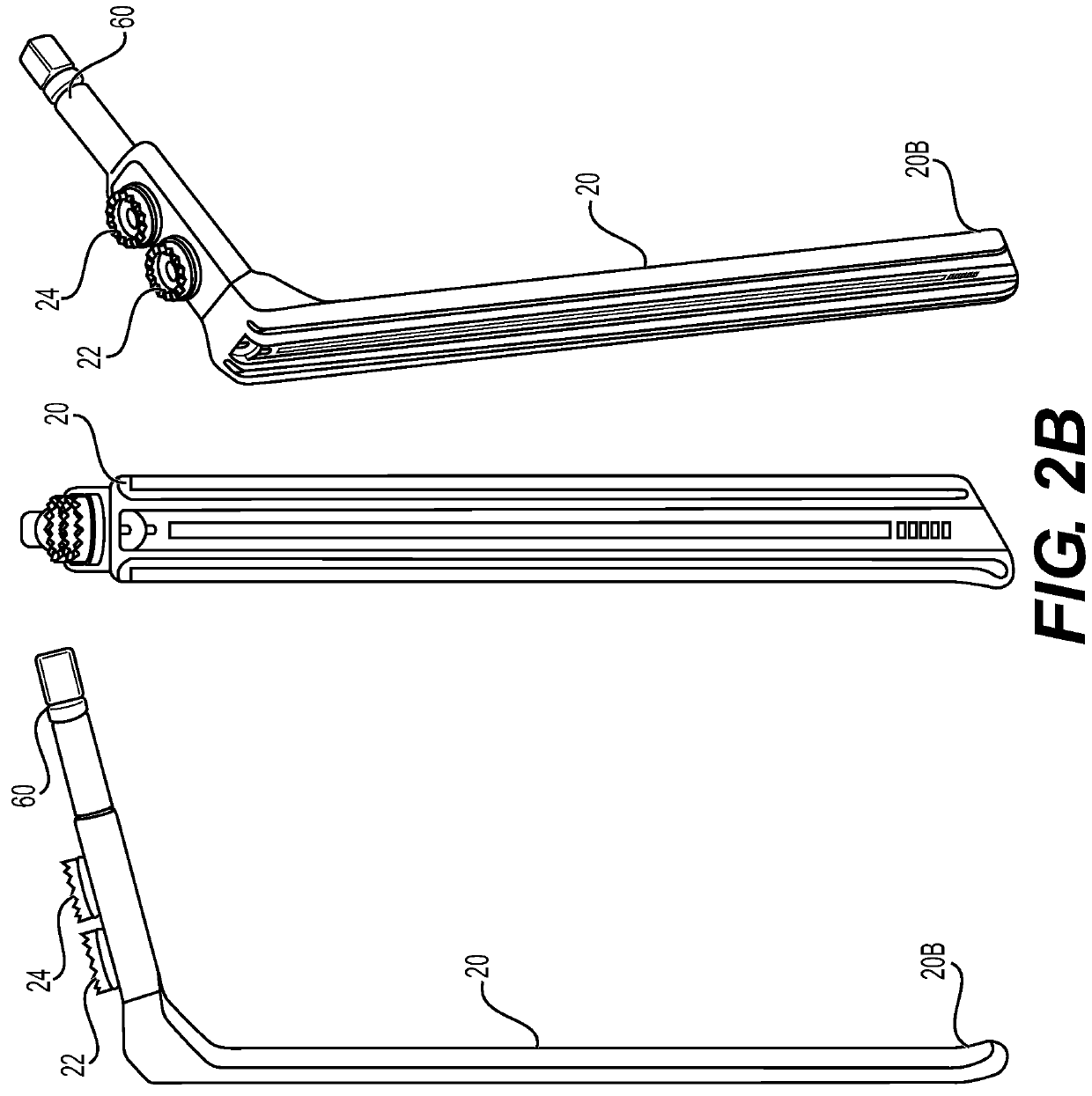Modular retractor system
a retractor system and module technology, applied in the field of tissue retractor systems, can solve the problems of limited control, surgeons' inability to feel the resistance of the blades or rotate, and surgeons' inability to finely adjust the movement of the retractor blades
- Summary
- Abstract
- Description
- Claims
- Application Information
AI Technical Summary
Benefits of technology
Problems solved by technology
Method used
Image
Examples
Embodiment Construction
[0028]There are 3 retractor blades 10, 20, 30 as part of the system, designated #1 Blade 10, #2 Blade 20, and #3 Blade 30. Each Blade will come in a range of lengths (approximately 10-20 cm). Each blade 10, 20, 30 can have optional retraction ends. FIG. 1 shows blade 10 with a flanged end 10A. FIG. 2A shows blade 20 with a flanged end 20A similar to blade end 10A or as shown in FIG. 2B showing a flared out enlarged end portion of the blade 20, but without the flanged end 20A. Blade 30 can have an inclined curved end 30A with a convex tip 30C shown in FIG. 3A and in FIG. 3B, the inclined curved end 30B has a concave tip 30D. As shown in FIG. 4, variations of these blade ends can be used to retract the soft tissue.
[0029]#1 Blade 10 is designed to be placed medially of the left common iliac vein, for a left sided up approach, or medially of the right common iliac vein, for a right sided up approach.
[0030]#2 Blade 20 is designed to be placed caudally of the bifurcation.
[0031]#3 Blade 30...
PUM
 Login to View More
Login to View More Abstract
Description
Claims
Application Information
 Login to View More
Login to View More - R&D
- Intellectual Property
- Life Sciences
- Materials
- Tech Scout
- Unparalleled Data Quality
- Higher Quality Content
- 60% Fewer Hallucinations
Browse by: Latest US Patents, China's latest patents, Technical Efficacy Thesaurus, Application Domain, Technology Topic, Popular Technical Reports.
© 2025 PatSnap. All rights reserved.Legal|Privacy policy|Modern Slavery Act Transparency Statement|Sitemap|About US| Contact US: help@patsnap.com



